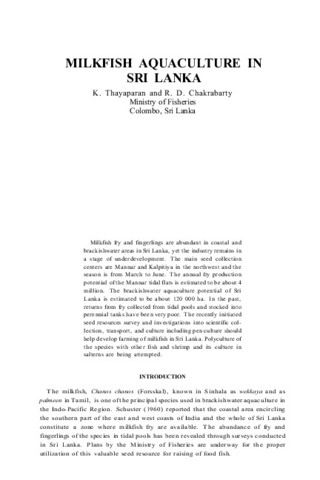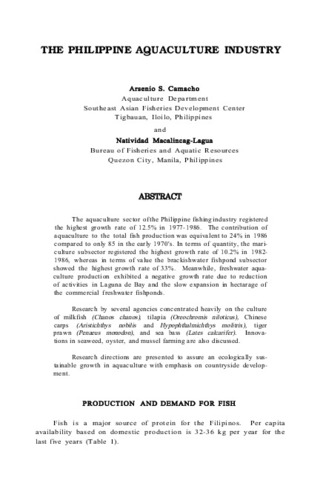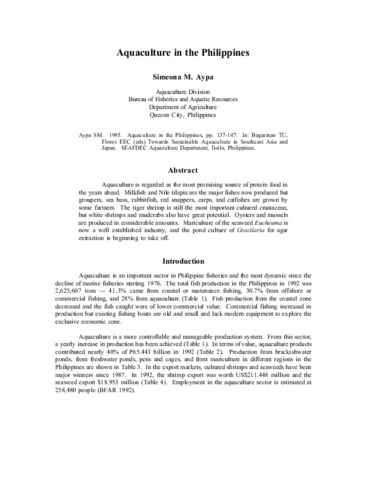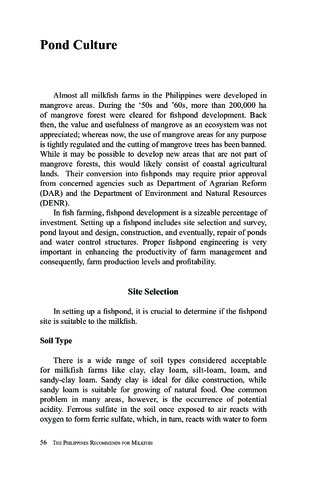Milkfish aquaculture in Sri Lanka
Share
Abstract
Milkfish (Chanos chanos ) fry and fingerlings are abundant in coastal and brackishwater areas in Sri Lanka, yet the industry remains in a stage of underdevelopment. The main seed collection centers are Mannar and Kalpitiya in the northwest and the season is from March to June. The annual fry production potential of the Mannar tidal flats is estimated to be about 4 million. The brackishwater aquaculture potential of Sri Lanka is estimated to be about 120,000 ha. In the past, returns from fry collected from tidal pools and stocked into perennial tanks have been very poor. The recently initiated seed resources survey and investigations into scientific collection, transport, and culture including pen culture should help develop farming of milkfish in Sri Lanka. Polyculture of the species with other fish and shrimp and its culture in salterns are being attempted.
Suggested Citation
Thayaparan, K., & Chakrabarty, R. D. (1984). Milkfish aquaculture in Sri Lanka. In J. V. Juario, R. P. Ferraris, & L. V. Benitez (Eds.), Advances in milkfish biology and culture: Proceedings of the Second International Milkfish Aquaculture Conference, 4-8 October 1983, Iloilo City, Philippines. (pp. 161-169). Metro Manila, Philippines: Published by Island Pub. House in association with the Aquaculture Department, Southeast Asian Fisheries Development Center and the International Development Research Centre.
Subject
Taxonomic term
Collections
Related items
Showing items related by title, author, creator and subject.
-
The Philippine aquaculture industry
Camacho, Arsenio S.; Macalincag-Lagua, Natividad (Aquaculture Department, Southeast Asian Fisheries Development Center, 1988)The aquaculture sector of the Philippine fishing industry registered the highest growth rate of 12.5% in 1977-1986. The contribution of aquaculture to the total fish production was equivalent to 24% in 1986 compared to ... -
Aquaculture in the Philippines
Aypa, Simeona M. (Aquaculture Department, Southeast Asian Fisheries Development Center, 1995)Aquaculture is regarded as the most promising source of protein food in the years ahead. Milkfish and Nile tilapia are the major fishes now produced but groupers, sea bass, rabbitfish, red snappers, carps, and catfishes ... -
[The Philippines recommends for milkfish:] Pond culture
Corre Jr., Valeriano L.; Saclauso, Crispino A.; Garcia, Yolanda T.; Salayo, Nerissa D.; The Milkfish Technical Committee 2016 (DOST-PCAARRD, 2016)






